

Wallypower 118 - the coolest luxury yacht in the world
The Wallypower 118 is a luxury yacht that gained widespread attention after it was featured in the 2005 science-fiction thriller movie "The Island." The yacht was designed and built by the Italian yacht manufacturer Wally Yachts and was launched in 2006. It is an ultra-modern and luxurious vessel that is designed to combine speed, style, and comfort.
In the movie "The Island," the Wallypower 118 is the personal yacht of the main antagonist, Dr. Merrick, played by Sean Bean . The yacht is depicted as an impressive vessel, sleek and stylish with a futuristic design that is fitting for the movie's sci-fi theme.
It measures 118 feet in length, thus the name, with a beam of 26 feet, and a draft of 5 feet. It can accommodate up to ten guests in five staterooms, and it has a crew of six. The yacht is powered by three gas turbines that generate a total of 16,800 horsepower, allowing it to reach a top speed of 60 knots, or about 70 miles per hour, making it one of the fastest yachts on the open seas .
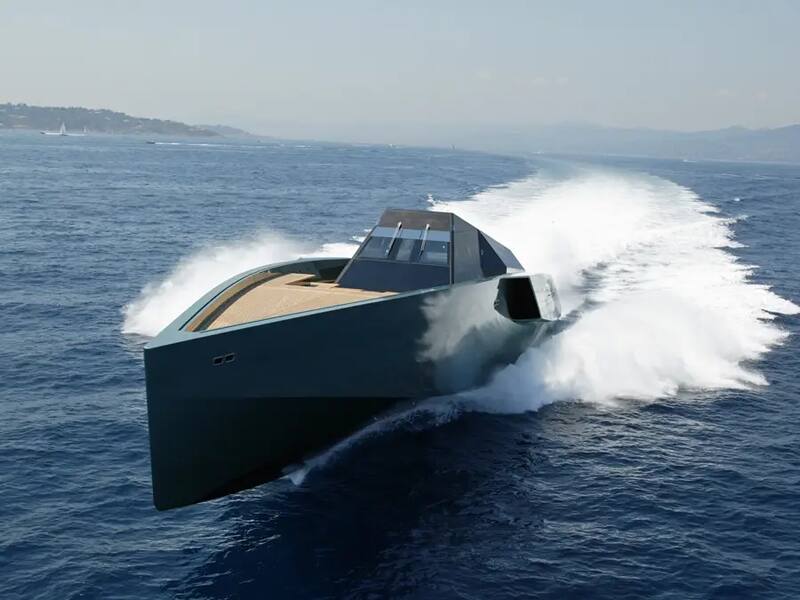
It's exterior design is striking and unique, with sleek lines and a minimalist style. The superstructure is made of carbon fiber, which makes the yacht lightweight and adds to its impressive speed. It's innovative propulsion system includes water jets instead of traditional propellers , which further contribute to its speed and maneuverability.
The interior is equally impressive , with a contemporary minimalist design, much like the outside. The main salon features floor-to-ceiling windows that offer stunning views of the surrounding water. The yacht's state-of-the-art entertainment system includes a plasma screen TV, satellite TV, and a surround-sound system. The master suite is located on the main deck and features a king-size bed, an en-suite bathroom, and a private balcony. The guest cabins are located on the lower deck and offer similar amenities and luxurious finishes.
It has become an icon in the world of yachting, renowned for its futuristic design and advanced technology. In "The Island," the Wallypower 118 is portrayed as the ultimate symbol of power and luxury , a fitting representation of the antagonist's character.
In conclusion, this is a remarkable yacht that has captured the imagination of people worldwide. Its characteristics have made it a standout vessel in the yachting world, and its appearance in a hollywood production has only added to its mystique.
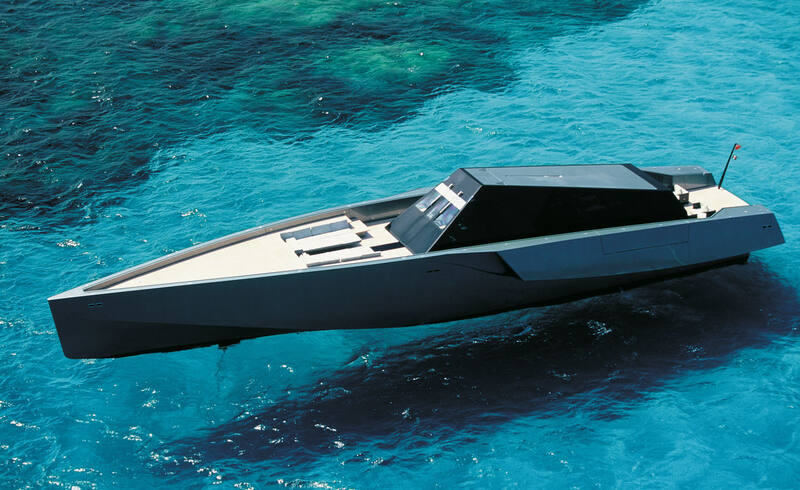
The price of the 118 Wallypower is US$33 million for the triple gas turbine version , or $22 million for twin diesels. It has a range of 1,500 nautical miles (2,800 km) at 9 knots (17 km/h), or 300 nautical miles (560 km) at 60 knots (110 km/h). Fuel capacity is 22,000 liters (5800 US gallons). At the maximum speed of 60 knots (110 km/h) the gas turbine uses 15 US gallons / 58 liters of fuel per nautical mile, 900 gallons / 3500 liters per hour . The boat displaces only 95 tons because of the sophisticated building technology that uses a hybrid structure to save weight, and can accommodate six guests and six crew.
It is worth noting that the final cost of a Wallypower 118 can be significantly higher than the base price due to the customization options available. Owners of the yacht can choose from a range of options such as interior finishes, materials, and technology upgrades, all of which can add to the cost of the yacht.
Exactly one has been built .

Coming Events

Subscribe to our newsletter
The latest news and stories. All the best roads, hotels and restaurants. Invitations to exciting events. Be the first to know by subscribing to our newsletter.
Mondo Gran Turismo
More news and stories from the world of Gran Turismo

La Guida - The Supercar Owner's Guide to Europe
Our favourite roads, hotels, restaurants and places to visit

Events Calendar
Beautiful road trips and famous racing tracks since 2002. Supercars only.

While our head offices are in Geneva, Switzerland, the team is spread throughout Europe: Sweden, Poland, Italy and Croatia. Please select the appropriate team member to contact below.
For general enquiries, you can always use [email protected] . For event registrations, please use [email protected] .

© 2002 Gran Turismo SA (Geneva / Switzerland)
The LION LOGO, GRAN TURISMO EVENTS, KING OF GRAN TURISMO, LIKE THERE IS NO TOMORROW, SPECIAL EVENTS DEPARTMENT, CARS AND COFFEE STOCKHOLM, FULL RETARD, MONDO GRAN TURISMO, LA FAMIGLIA and PARC FERME are registered trademarks
Do not use any of our brands without written approval
Gran Turismo SA c/o PKF | Rue des Battoirs 7 | 1205 Geneve | Switzerland | [email protected]
Log in or Sign up
You are using an out of date browser. It may not display this or other websites correctly. You should upgrade or use an alternative browser .
The power yacht at the end of The Island ?
Discussion in ' Powerboats ' started by laurentk , Sep 17, 2006 .
laurentk New Member
Hello guys, I am new to the forum, and desperatly trying to find the designer name of the yacht that you see at the end of the movie The Island. For those who didn't see it, but might have an idea, here is a (vague) description: must be aprroximately 120/150 feet, dark green body, looks very very futurist, dark (black smoked glass) cabin, and some kind of side parts at the back of the boat that can expand when berthing. Thank you so much ! Laurent
I found it ! The most amazing boat ever (for me ....) This is it: http://en.wikipedia.org/wiki/118_WallyPower http://upload.wikimedia.org/wikipedia/en/c/c9/118WP.jpg http://extremetechnology.blogspot.com/2006/03/extreme-superyacht.html http://www.wally.com/default.asp?bflash=1 And pictures here: http://images.google.com/images?lr=&ie=UTF-8&oe=UTF-8&q=118 WallyPower&sa=N&tab=wi http://flickr.com/search/?q=118 Wally Power&m=text Thx ! Laurent
Willallison Senior Member
The Wally is an extraordinary vessel. Though the 118 is not without its flaws - for instance, it is apparently impossible to see the horizon, let alone the water from the helm whilst the boat is at speed! More importantly - was it a good film?
Frosty Previous Member
3 RR turbine engines !!! one can only immagine what the fuel consumtion will be plus you will probably need a day to learn how to start them. Real macho stuff but of all the boats that have ever been called a millionares boat,-- then this must be it. Its ugliness is beyong description , but its ugliness becomes confusing to the mind to the point that you have to re calibrate ugly, untill its ugliness doesnt matter. Its as ugly as a tank, some people like tanks. A very strange boat-- you iether like it or you dont.
Well, Jack, it's always the same questions. When facing a Honda Civic, everybody will agree on a common well designed car that rolls. When facing a Lamborghini Murciélago, some will love it, some will hate it, but none will stay "feelingless". So ... is it what we call art ? And is the WallyPower 118 a work of art ? However, I totally understand that someone would hate it ... I certainly agree with Will, for me, it is a beautiful vessel .... And I actually hapened to see it in real this summer in Bonifacio, Corsica, crusing in a turquoise bay.... And ..... wow. As for the movie, I loved the photography of the film .... very esthetic. I also liked the story, but this is debatable )
Wayne Grabow Senior Member
World's most outstanding yachts There was a television tour of this yacht on a program whose topic was world's most outstanding yachts. It does have that love/hate reaction on people; certainly expands the universe of yacht types. The fuel bill must be it's most impressive statistic.
wonder if that's available for download...
If you go on the website, there is a promotional movie you can watch. Besides showing how esthetic this boat is (for the ones on the love side ), they also show in detail the how functional it is intended to be. AND to answer your question, they give the consumption .... and as I know nothing about the powerboat world .... I didn't really understand But I am sure you'll find it interesting !
fish is a fish Junior Member
The fuel capacity is 5,812 gallons. Fuel consumption at top cruising speed is one liter per second, or about 15 gallons per minute! no thanks not with the gas prices in CA.
vandutch Junior Member
Stealth "sex appeal" Boat This VanDutch boat may interest those that liked the boat featured in the Island. It has a stealth sex appeal with the same avant garde genre.
Attached Files:
Vandutch_33.jpg, 500252_2c.jpg.
Andiamo Junior Member
Are you the builder of that Van Dutch?? The style rocks. How much change does it set a guy back and whats it top out at?
longcours62 Junior Member
I never could understand : sex appeal ...for a boat ! But if you compare the forms of the Wally and the forms of Adastra In my point of view I found the second one more 'avant garde genre' and I don't ask about the the comparaison of the consumption betwen each of them !!
adastra_afloat.jpg
Alik Senior Member
longcours62 said: ↑ I never could understand : sex appeal ...for a boat ! Click to expand...

It look Alik said: ↑ 'Sexy boat' usually means sleek nonsense of 100+ feet in length. It is like a 'sexy' woman - impractical, with terrible character and needs a lot of money to own/maintain Click to expand...
- Advertisement:
lol. well, this sexy one is not at 100+ feet. She must have wings (she was Redbull sponsored). She flies at an excess of 45 knots. She is for a type of personality, definitely not for everyone. The practicality depends on what you're looking for: if you're asking fuel consumption, depends on the model (i.e. engine choice). Character: what you see, no hidden agenda (unlike a sexy woman). Maintenance: the designer's choices had practicality in mind based on all the articles I've read about it. If you want her to strattle then take an Adastra because VanDutch's flexibility is measured in other regards.
vandutch_REDBULL_PASSION.jpg
Foiler Power Yacht
Conversion sail to power
Powerboat design
Designing and building small tunnel hull powerboat
Looking for easy to build single outboard small power cat design in ply
Question regarding dual batteries on powerboat
New Power Catamarans
Searching for power cat plans
Get feet wet / Great Lakes / Loop sailboat - power conversion project
37’ Power Catamaran
- No, create an account now.
- Yes, my password is:
- Forgot your password?

The 10 Most Memorable Yachts in Movies
Yachts equate to luxury in real life and on the big screen, and they’ve been featured in a huge list of hit films. Sometimes yachts are used for romantic interludes, other times they’re put to work as the ultimate getaway vessel or as the scene of an ostentatious celebration. No matter what the occasion, the main point of inserting any yacht into any film is to elicit some kind of “ooh” or “ahh” from the audience. These movies accomplish that and more.
In no particular order, here are 10 of the most memorable yachts that have been featured in movies.
1. Usher, Entourage (2015)
Usher, also known as Mr. Terrible, is the 47 meter superyacht in the 2015 movie Entourage. On screen, it symbolizes the decadent lifestyle of main character Vincent Chase, played by actor Adrian Grenier. This yacht was fitting for the movie, as it really is as lavish as it looks. It sports an elevator, spacious sundeck, Jacuzzi, five luxurious cabins, and has been used for partying off the coast of Florida and in the Caribbean in real life. It accommodates up to 12 guests and was engineered to be a powerful performer.
2. Northern Cross aka Manticore, Goldeneye (1995)
One of Pierce Brosnan’s most memorable performances as Bond was in 1995’s Goldeneye, in which he saves the world from a global financial terror plot. In the film, the yacht Northern Cross was called Manticore and served as the residence of smooth assassin Xenia and her crew. Northern Cross is actually available for charter in the Baltic Sea, and it costs tens of thousands of dollars to do so. The 43 meter yacht hosts up to 12 passengers and has six fabulous suites. It ranks as one of the favorite yachts in movies among Bond fans.
3. R Rendezvous aka Left Hand, Donnie Brasco (1997)
Few who have seen the crime drama Donnie Brasco will forget the yacht seen in the movie, Left Hand. It was an integral part of the plot, not just a nice showpiece, but its looks alone make it one of the more memorable yachts in movies. Called R Rendezvous off-screen, the 34 meter yacht was produced in 1992 and it still stands today. Those with the cash to charter R Rendezvous get to enjoy its onboard Jacuzzi, big sundeck, and three cabins with plush amenities.
4. Attessa, Overboard (1987)
Attessa was the yacht featured in the 1987 romantic comedy Overboard, starring Kurt Russell and Goldie Hawn. The interesting thing is this yacht actually belongs to a super rich man named Dennis R. Washington. He’s an industrialist worth several billion dollars who loaned the 144 foot long Attessa to the crew while the movie was in production. Washington also lent the boat to the producers of the 1993 Demi Moore film Indecent Proposal.
5. Kingdom 3KR aka Flying Saucer, Never Say Never Again (1983)
Kingdom 3KR, the yacht seen in the 1983 Bond film Never Say Never Again, was special for several reasons. Not only was it in Sean Connery’s final movie in the franchise, it was the most expensive yacht in the world at one time. Kingdom 3KR also has an interesting history. Donald Trump bought the 86 meter superyacht for a whopping $29 million, revamped it, and dubbed it the “Trump Princess”. He later sold it for $40 million to a Saudi billionaire flush with cash in 1991. The yacht now has its own movie theater onboard, a helipad, dance floor, and can host up to 22 passengers in 11 suites.
6. Lady M aka Naomi, The Wolf of Wall Street (2013)
The Wolf of Wall Street is all about excess and its pitfalls, so you know the film had to include a super swanky yacht. In the movie Leonardo DiCaprio’s character, Jordan Belfort, gifts the yacht to his wife, played by Margot Robbie . The boat is named after her, Naomi. The vessel was shown prominently onscreen as the site of raucous parties and all types of debauchery.
In actuality, the 44 meter Lady M was built for luxury cruising and has a host of lavish details. A professional grade gourmet kitchen, marble flooring, a baby grand piano, wet bar, Jacuzzi, and five stylish staterooms all combine to make it super impressive and one of the most expensive yachts in movies.

7. Helios 2 aka Anson Bell, Syriana (2005)
Matt Damon and George Clooney gave award winning performances in the 2005 drama Syriana, and the Anson Bell — real name Helios 2 — was at the center of the action. The 51 meter custom yacht has an aluminum superstructure and hull, along with a state of the art stabilization system. Engineered by esteemed brand Palmer Johnson, Helios 2 really is the epitome of luxury in all its forms, just as it was in Syriana. It has five gorgeous cabins and can be enjoyed by up to 12 guests.
8. M3 aka Soufriere, Casino Royale (2006)
Daniel Craig made his first appearance as 007 in 2006’s Casino Royale, and he did so while looking suave on the M3. It was called Soufriere in the film, and was custom made for the movie in 2005 by none other than British company Spirit Yachts. When it carried Bond and Vesper Lynd on a romantic trip through Venice, it became the first yacht to travel the Grand Canal in three centuries. The 32 meter sailing yacht can reach a top speed of 43 knots and has four cabins onboard. It also has advanced media systems, a spa pool, and enough water toys to keep anyone entertained for hours.
9. Wallpower 188 aka Renovatio, The Island (2005)
Ewan McGregor starred in the 2005 Michael Bay film The Island, in which he notably sketches the look of a yacht that’s imprinted in his psyche. A modern sci-fi flick about a utopia needs an awesome boat, right? That role was filled by Renovatio, which is really called the Wallpower 188 and was built in 2002. This particular yacht oozes class and its angular profile makes it stand out. The 36 meter vessel reaches a top speed of 60 knots, has a Rolls-Royce Kamewa water jet onboard, and dons a color shifting exterior. The Wallpower 188 has won many yacht and design awards, and is renowned around the world for its innovative features and style. It was put on the market after the movie’s production for $33 million.
10. White Knight, The Bourne Identity (2002)
The White Knight yacht was shown in 2002 in the first installment of the Bourne franchise, The Bourne Identity. Jason Bourne, played brilliantly by Matt Damon, goes onto the boat to attack one of his targets. Bourne ultimately doesn’t carry out the mission, but White Knight looks spectacular nonetheless.
People can actually charter it in the Mediterranean, and it was built in 1985. The yacht underwent renovation in 2010 to make it better than ever. It now has 8 large cabins, an outdoor dining area, and a wealth of amenities and entertainment options.

Garrett by trade is a personal finance freelance writer and journalist. With over 10 years experience he's covered businesses, CEOs, and investments. However he does like to take on other topics involving some of his personal interests like automobiles, future technologies, and anything else that could change the world.
Similar Posts

A Closer Look at Feadship Superyacht Vertigo
Very few purchases can cement a person’s status as much as a yacht. These ships impress upon viewers the supreme style, confidence, wealth, and sophistication of the owner. While yachts range in size, larger yachts…

A Closer Look at The Epic 728-Foot Somnio Superyacht
Welcome to the world of the future, where the oceans will take on a new duty, one that involves the creation of residential life aboard a yacht. Right now, that yacht is the Somnio. This…

A Closer Look at Nobiskrug Mogambo
Nobiskrug’s super yacht Mogambo is a unique ship with a unique name and heritage. It is named after a classic adventure movie set in Kenya titled Mogambo, which is a native word for ‘Voice’. The…

A Closer Look at Nicolas Cage’s Yacht Sarita
When money is of no concern, the rich and famous have the luxury of spending their money however they wish. While some focus on investing in property or they travel the world with their earnings,…

A Closer Look at the 280-foot Lürssen-built Valerie
Buying a custom-built luxury yacht can be the achievement of a lifetime, but the “Valerie” isn’t new in town. In fact, she made news recently as the place where “Bennifer” (Ben Affleck and Jennifer Lopez)…

Sirena’s New Fully Customizable 78-Foot Yacht
The Turkish boatyard Sirena is officially introducing its new yacht at the Cannes Yacht Festival in September 2022. However, they could not wait until then to show off their new vessel and have been giving…
Leave a Reply Cancel reply
You must be logged in to post a comment.
Log in or Sign up

You are using an out of date browser. It may not display this or other websites correctly. You should upgrade or use an alternative browser .

talkingstone New Member
Last evening I happend to catch a movie trailer and saw what I believe to be a Wally MV featured. Can anyone tell me the name of this movie or perhaps shed some light on the use of the yacht. I don't ever remember seeing a Wally in a movie before.
YachtForums Administrator
I'm still trying to figure out who built the yacht you posted earlier in another thread... http://www.yachtforums.com/forums/showthread.php?p=13017#post13017
YachtForums said: I'm still trying to figure out who built the yacht you posted earlier in another thread... http://www.yachtforums.com/forums/showthread.php?p=13017#post13017 Click to expand...
Are you sure? Check that link again... http://www.yachtforums.com/forums/showthread.php?p=13017#post13017
Earlier Link The post on the Wally is a new post. The post you are talking about is an earlier one on a yacht which was at Saltspring Island and I was trying to id.
talkingstone said: The post on the Wally is a new post. The post you are talking about is an earlier one on a yacht which was at Saltspring Island and I was trying to id. Click to expand...

Remy New Member
talkingstone said: Last evening I happend to catch a movie trailer and saw what I believe to be a Wally MV featured. Can anyone tell me the name of this movie or perhaps shed some light on the use of the yacht. I don't ever remember seeing a Wally in a movie before. Click to expand...
Thank You! Thanks. When I saw the trailer last night it really got my attention. I hope that the Wally is actually part of the movie and not just in one scene.
Kevin YF Moderator
Nice! http://lime.theisland-themovie.com/ I'm checking the Trailers section now... can't be bad though... Ewan McGregor (cool) and Scarlett Johansoon (hot). Edit: Here's a pic of the WallyPower, just for the curious without perhaps a high-speed connection to watch movie trailers all day long.
Attached Files:
Wally_island.jpg.
I also just saw a Caddie Cien (concept car) in it...
YachtForum Publisher/Admin
I'm a little behind the times. Don't watch too much TV, but just saw The Island on cable. Had to wait until the end of the movie to see a 2 second glimpse of the 118. Oh yeah... that Caddy Cien was Cool! Better yet... how 'bout that bike? Gots to get me one of those!!!
viking 58 YF Historian
There was a good show on HGTV HD called extreme yachts on Sunday night that was a good watch. I'm sure they will replay http://www.hgtv.com/hgtv/spcl_prsntn/episode/0,1806,HGTV_3909_42923,00.html
- No, create an account now.
- Yes, my password is:
- Forgot your password?

- Cast & crew
- User reviews

- In 2019, a mercenary pursues a man and woman who escaped a research facility after learning their true fate.
- Set in a dystopian future, a group of people work in a facility, essentially as slaves. They do have an incentive though - a regular lottery is held and one of them gets to leave the facility and its restrictions and move to The Island, a paradise. Lincoln Six Echo is one of the workers in the facility and he is infatuated with Jordan Two Delta. His life is fairly uneventful and mundane until Jordan Two Delta gets selected to go to The Island. Then Lincoln starts to discover the truth about the facility and The Island. — grantss
- Futuristic thriller about a contained, seemingly utopian facility in the mid-21st century. The residents hope to be chosen to go to the Island - the last uncontaminated place on Earth, but when one inhabitant discovers that there are sinister forces at work, he and a female friend make a daring escape. — atwardy
- Lincoln Six Echo is just like everyone else - he's waiting to go to the Island, the only place left in the world to actually live a life. It all sounds like paradise, but Lincoln Six Echo soon discovers that there's actually a sinister purpose going on at that facility and that he must escape - but not before stopping the sinister plan.
- The Island begins with a montage of dream scene sequences, and a resonant male voice saying "You're special. You have a very special purpose in life. You've been chosen. The Island awaits you." Lincoln Six Echo ( Ewan McGregor ) snaps awake from his dream. An LED display above him on the ceiling of his room announces the detection of an erratic sleep cycle. As he sits up, another display on his wall requests his presence at the tranquility center for a wellness evaluation, but Six Echo is upset at this, because he feels fine. The amount of control Lincoln Six Echo has over his life is shown plainly as he goes to the bathroom-his toilet analyses his urine and announces an excess of sodium, which leads to a recommendation of nutrition control. Lincoln Six Echo dwells in a tightly controlled compound, where he is treated well, but subject to much more regimentation than he cares for. He puts a bracelet around his wrist to a scanner on the wall, and drawers open with fresh clothes-a white tracksuit, socks and sneakers. Lincoln Six Echo steps outside of his room and touches his bracelet to a scanner just outside the door, to lock it. As he begins walking down the hall, a number of other citizens attired in identical looking tracksuits and sneakers are also walking along the hallway. He gets into a lift with a number of these people, and an automated voice announces the date as July 19, 2019. As the lift continues down, holograms play along the walls announcing a Lottery, and snapshots of a beautiful, tranquil island among sparkling blue ocean. A beautiful young woman announces the winner of the latest Lottery as Starkweather Two Delta. He's been chosen to be taken to a place known as The Island. An image of Starkweather Two Delta ( Michael Clarke Duncan ) appears, speaking joyfully and giddily about his dream come true. He's only dwelt among the citizens of the compound for six months. He encourages everyone to believe in the dream and that they'll be joining him on this island soon. One citizen in the lift, however, Gandu Three Echo ( Brian Stepanek ) is upset, however, and pounds a fist against one wall. This is immediately noticed by compound supervisors watching a series of monitors. As the Community Announcer ( Noa Tishby ) speaks about The Island, the last place on Earth free of a deadly pathogen, Gandu Three Echo asks a few other citizens how long they'd been with the compound-he's been there seven years without ever winning the Lottery, and he's not happy. As the lift reaches its destination, two compound supervisors, in black tracksuits and headsets, make Gandu Three Echo swipe his bracelet against portable scanners they carry, and note he's been cited for public disturbance before. They insist on seeing for themselves that he's adequately calmed down before letting he and the other occupants of the lift go on their way. Lincoln Six Echo continues walking through the compound's plazas, and we see citizens engaging in various fitness and yoga activities, and swimming in a pool. All seem content, but black-tracksuited supervisors are shown keeping close watch all throughout. The citizens of the compound, all of whom wear white tracksuits, are treated well, but their lives are strictly regimented and regulated. The Community Announcer's voice recites regular mantras such as citizens being requested to be polite, pleasant and peaceful, and that health brings happiness. At the cafeteria, Lincoln Six Echo swipes his bracelet, and the nutritionist announces that his available choices for the day's breakfast are fruit, oatmeal, and bran, based on continuing monitoring of his nutrient levels. Lincoln Six Echo is unhappy about this, looking for some degree of fuller, sweeter-tasting breakfast, but the nutritionist doesn't budge and takes his demeanor with displeasure. She dispenses a gruel-like oatmeal onto his tray with some fruit and berries and sarcastically says, "Yummy." Lincoln Six Echo's best friend in the compound, Jordan Two Delta ( Scarlett Johansson ) sidles up to him and tells him to "watch and learn." She engages the nutritionist in friendly small talk, buttering her up with a pleasant smile. Jordan Two Delta's available choices for the day are powdered eggs, dried fruit and yogurt, but her charm pays off as the nutritionist lets her 'cheat' with a serving of bacon. Jordan Two Delta shares the bacon with Lincoln Six Echo, teasingly saying he needs all his strength for tonight, where she promises to go easy on him. A supervisor comes up and politely asks for them to separate. Lincoln Six Echo walks past an education room where citizens are reading a surprisingly basic children's book aloud in unison. He arrives at the office of Dr. Merrick ( Sean Bean ), the presiding doctor for the compound. Dr. Merrick questions Lincoln Six Echo about his friendship with Jordan Two Delta-friendships with other citizens is freely encouraged, but there are proximity rules against regular close-up contact, especially between male and female citizens, whose living quarters are separate from each other. Furthermore, Dr. Merrick is aware that Lincoln Six Echo is being haunted by nightmares while sleeping, and Dr. Merrick says he'd like to know more about them. Lincoln Six Echo says in the dream, he's riding on a beautiful boat toward the Island (he draws a sketch of the boat on request), but he's hurled into the ocean by some unseen figure and drowns. Dr. Merrick probes further into what's troubling Lincoln Six Echo, and he finally explains how he's begun questioning the regimentation of life at the compound-why is Tuesday night 'tofu night?' He wants some bacon with his breakfast, and he wants to wear different colors other than white for his clothes-not to mention, who cleans and folds his clothes and places them neatly back in his drawer? And there should be more to life at the compound than just waiting to go to the Island. Dr. Merrick calmly tries to explain that Lincoln Six Echo is lucky to have survived the contamination that left so much of the Earth uninhabitable, and there's one pristine spot remaining for people to repopulate the planet-that's their current purpose, Dr. Merrick says. Although, as Dr. Merrick explains, he himself, and all other staff and supervisors at the compound, are ineligible to win the Lottery and cannot ever go to The Island, as they are needed to keep the compound facility operating smoothly. Lincoln Six Echo finishes drawing a sketch of the boat-it's a beautiful and well-rendered sketch, with the word Renovatio-Lincoln Six Echo doesn't know what the word means, but it always appears in his dream. Dr. Merrick wants to run some medical tests on Lincoln Six Echo. He brings him into an examination room and seats him comfortably on a reclining seat-but even though Dr. Merrick says the tests and scans are harmless, metal restraints snap shut, pinning Lincoln Six Echo's hands and feet, and keeping his head against the headrest. Dr. Merrick places a series of tiny robotic devices on Lincoln Six Echo's cheek, which crawl into his right eye socket between the eye and eyelids, and which hurts more than Dr. Merrick insists otherwise. He says the micro-sensors will ride along Lincoln Six Echo's optic nerve and upload data for twenty-four hours, after which they'll pass out of Lincoln Six Echo through his urine-which Dr. Merrick admits, might hurt. Lincoln Six Echo arrives at the work center for work. He and a citizen named Jones Three Echo ( Ethan Phillips ) are using infuser tools to feed nutrients into tubes that lead to where the citizens' meals are prepared. Lincoln Six Echo is bored with the job, although Jones Three Echo finds it satisfying. Gandu Three Echo points out a new citizen in the compound-another survivor of the contamination that made Earth uninhabitable. More survivors are being found regularly, and the new arrival, named Seven Foxtrot, is being tutored on how to work at feeding the nutrient lines. His behavior is childlike, and Gandu Three Echo wonders if all current citizens at the compound went through that during decontamination. Jones Three Echo suddenly begins telling the other two about a theory he has: The Lottery is rigged. He produces some papers on which he's done some figuring on the idea. Through a complex series of mathematical equations which, in fact, don't make a lot of sense, Jones Three Echo predicts he's winning The Lottery that night. The calm of the work center is suddenly broken as a female citizen, Lima One Alpha, collapses. Lima One Alpha is heavily pregnant, and it appears she's gone into labor. The other women near her are ecstatic for her as a wheelchair is summoned; Lima One Alpha is now destined to go to the Island with her baby. The computer at Lincoln Six Echo's station goes down and he needs to report to Tech Services to get it repaired. A supervisor gives him a tri-key to retrieve a contamination kit, as the supervisor needs to help clean up several glass beakers that Lima One Alpha dropped when she collapsed. Heading through a normally restricted area, Lincoln Six Echo heads through a supposedly contaminated area in Sector Six to visit a friend of his, James 'Mac' McCord ( Steve Buscemi ), the down computer being a fabricated story. McCord likes Lincoln Six Echo and bends some compound rules for his sake, giving him a few glimpses of life beyond the compound proper. McCord lives in Sector Five of the compound, though he doesn't give details about it. Bringing Lincoln Six Echo into his private workstation (which is covered with photos of young women clad in skimpy swimsuits), McCord talks a little about Dr. Merrick's perceived arrogance, comparing him to a concept Lincoln Six Echo has no understanding of-God. McCord is needed in an area called Product Extraction. He lets Lincoln Six Echo stay in the work station for a short while, but needs to take back a small flask of a strange beverage he shares with Lincoln Six Echo-something he likes, although McCord doesn't feel comfortable telling him too much about it. Lincoln Six Echo asks McCord a fair amount of questions, which the older technician isn't comfortable about. Just what time McCord spends with Lincoln Six Echo can get him in a lot of trouble as Lincoln Six Echo isn't supposed to be in Sector Six at all, in the first place. As McCord heads off to Product Extraction, Lincoln Six Echo glances up and sees a flying insect. Curious, he follows it; it seems to be following light from somewhere above. Lincoln Six Echo catches the insect and puts it in a matchbox on McCord's table, one that has a logo on it from something called 'Aces and Spades.' McCord arrives in Product Extraction, asking two workers there a curious question-"Chinese junk (referring to the computers) locked up again?" As he sets about to work, the workers are moving into position a plastic pod filled with fluid...in which floats a humanoid life form. McCord tries to work on the computer, but is finding himself very disturbed by what the workers are doing-the 'Product' being 'Extracted' from the pod is a fully grown male human, which a doctor says has been named Three Helo. Workers place a raised brand on Three Helo's wrist and then a bracelet around the wrist, over the brand. As workers finish the procedure and complete cleaning up, the camera pans through a window into a vast chamber where hundreds of similar pods are neatly organized... all containing humans in a state of stasis. The camera then rapidly pans along several arrays of technology leading back to Jones Three Echo still working on the nutrient lines-it's shown that the tubes he tends to are actually feeding nutrients to these humans still in the pods. Lincoln Six Echo goes back to his quarters and places the insect from the matchbox into a glass vase. Evening, in a social center of the compound. Lincoln Six Echo and Jordan Two Delta square off in a combat arena-or rather, tri-dimensional holograms of them do, while the two of them manipulate these holograms in an elaborate combat game, using hand and arm movements to work the controls. Jordan Two Delta wins this game, her hologram knocking out Lincoln Six Echo's hologram, causing Lincoln Six Echo to be ridiculed by other male citizens for being 'beaten by a little girl' as he joins Jordan Two Delta at the juice bar for some refreshment. As they talk, Jordan Two Delta asks Lincoln Six Echo how he feels. He says he feels fine, but Jordan Two Delta says that his face always gives him away when he lies-his mouth smiles, but his eyes don't. Lincoln Six Echo tells Jordan Two Delta about the flying bug he found-something that should have gone extinct with the pathogen, and yet came into the compound through a ventilation shaft without setting off any pathogen sensors. The insect is a little larger than Lincoln Six Echo's thumb, meaning it's not too small to evade the pathogen sensors. Lincoln Six Echo is wondering about more than just this-how did it survive outside? And what about new human survivors; where do they come from? Jordan Two Delta thinks it's good that new survivors are still being found, and she's baffled at how Lincoln Six Echo is convinced of bad things being hidden behind the seemingly good life at the compound. She does, however, want to see the insect Lincoln Six Echo found. After Jordan Two Delta walks away, Gandu Three Echo and Jones Three Echo find their way to Lincoln Six Echo-Gandu Three Echo has picked up a curious new word from the censor: "Dude." None of the three men understand this word, although they all think it sounds amusing. They also think it's spelled, 'dood.' The walls in the social center light up with holographic displays as a Lottery begins. The Community Announcer begins the usual speech about the Lottery and a lucky winner heading to the Island. Citizens all around the compound stop and begin watching nearby monitors and screens. The winner of the Lottery is Jordan Two Delta. She stands up, her face frozen in stunned delight as people all around her begin to cheer and applaud. Lincoln Six Echo, however, is seen looking unhappy. Not only is he losing his best friend in the compound, but he still hasn't been chosen. Still, as he approaches her, he puts on a brave face and smiles at her. A supervisor's portable tablet lights up with their faces as a proximity warning; Lincoln Six Echo has touched Jordan Two Delta's arms with his own. Lincoln Six Echo tells Jordan Two Delta that she was right after all: good things do happen. The supervisor arrives to make them separate, spoiling the emotional goodbye that the two must bid each other. Lincoln Six Echo has the same nightmare again while sleeping. He awakes suddenly, leaning up to look at the flying insect. He still has the tri-key-something he shouldn't have-and his face lights up with an idea. All the citizens are asleep, so Lincoln Six Echo must sneak through the compound to avoid being spotted by a supervisor. He makes his way to the area of Sector Six where he found the insect-an area normally restricted to level three supervisory personnel-and releases the insect from the matchbox. He climbs a long ladder in the ventilation shaft, following the insect, and as he crawls through a crawlspace he finds a loose panel in the ceiling. Pushing it up, Lincoln Six Echo climbs up and out into a hallway in a medical sector. He ducks through a door, finding a utility closet with a number of blue medical lab coats and puts one on. Lincoln Six Echo navigates his way through the medical center hallways until he arrives at a window to an OB/GYN room where doctors and nurses are with Lima One Alpha, who has just finished delivering her baby. Lima One Alpha looks on, a tear of joy running down her face as she looks at the healthy baby girl. But the happy scene quickly takes a horrific dark turn as a doctor injects something into a drip attached to Lima One Alpha's arm, and the nurse closes velcro straps, binding Lima One Alpha's ankles to the stirrups on the table. Lima One Alpha's body begins shaking, her breathing grows more rapid-and she dies. A tag with her name has been placed around her big toe. Lincoln Six Echo watches in horror as a sheet is raised over Lima One Alpha's head, the doctor and nurse in the obstetrics chamber acting as if it's nothing out of the ordinary. Once the room is empty Lincoln Six Echo sneaks inside, poking at Lima One Alpha's face amazed that she'd really been killed. Meanwhile the nurse carries the baby into a 'client waiting room,' and presents the baby to a man and woman who wait anxiously. The woman is a spitting image of Lima One Alpha. The nurse presents them with the baby, saying it's a beautiful girl. The nurse tells them that when they're ready, she has copies of their policy termination papers for their records. Lincoln Six Echo makes his way to a reception area for a nurse station. One nurse talks to two men in orange lab coats. The men are medical couriers, there about who the nurse excitedly asks is, 'Starkweather, the big, cute football player in the Reebok commercials.' The two men are in a hurry to pick up something from this Starkweather; however, he's still in surgery. Starkweather Two Delta lays on an operating table in the surgery room, where a medical team is beginning surgery. As they start to make an incision through the chest and sternum, however, Starkweather Two Delta's heart rate and blood pressure begin to rise. Despite the medical team's efforts, Starkweather Two Delta awakens, throwing off the anesthesia, and goes into a panic as he starts to understand what's happening. Using his size and strength, he makes a desperate bid to escape, bulling over one guard as more pursue him. Starkweather Two Delta runs in a panic, a number of wires still attached to his body. Lincoln Six Echo ducks behind a mobile tray for cover. Guards fire harpoon guns, small, narrow barbed harpoons jabbing through the back of Starkweather Two Delta's calves. The harpoons are attached to cables that are used to drag him back toward the guards. A frantic Starkweather Two Delta pleads and screams for his life, though he does so in a surprisingly innocent, adolescent-like manner. As Starkweather Two Delta is dragged back to the surgery room where his liver is due to be removed, a guard notices Lincoln Six Echo, mistakes him for a nurse, and helps him up, assuring him it's not the first time something like that has happened. He then turns to a portable radio, telling 'Ether-Con' that the 'product is secure.' Lincoln Six Echo races back to the floor tile through which he'd entered the medical sector, and ducks back down through it, closing it back up so hurriedly that he leaves the tile ajar, enough to be noticed. Guards at a security station are watching a video replay of Starkweather Two Delta's escape attempt, all of them laughing uproariously at the huge man's barreling down one guard during the attempt. At that moment, Dr. Merrick arrives to question the guards about the incident. He finds the report about the escape attempt a very serious matter and orders that the video footage be replayed for him. As he watches, something catches his eye, and he orders the tape stopped, and then replayed in slow motion. Dr. Merrick catches the fleeting image of what appears to be a medical nurse crouching in hiding behind a large mobile tray at the moment Starkweather Two Delta was recaptured. Dr. Merrick orders the camera to zoom in on this hiding nurse, and sees the bracelet worn by compound citizens. He quickly orders an alarm to be sounded; 'a product is on the loose.' He orders a facial match scan to be run as guards scramble back to the area, called simply 'Level 2.' It's early morning. Jordan Two Delta awakens, her LED banner reading that she's scheduled for Island departure. Lincoln Six Echo comes heading toward her quarters, in an area of the compound restricted to female residents. The other women stare in surprise, a few trying to tell him that men aren't supposed to be allowed in the women's quarters. Meanwhile security personnel continue mobilizing, some grabbing weapons. Running through Level 2 in the medical sector, they find the loose floor tile that Lincoln Six Echo came through to get into the area. Lincoln Six Echo arrives at Jordan Two Delta's room and slaps frantically on the door. He grabs her wrist and urgently tells her only that she has to come with him. Security personnel positively identify Lincoln Six Echo as the trespasser. Dr. Merrick orders a full contamination lockdown so he can be found. They sweep the medical center, even barging in on the surgery area where Starkweather Two Delta's liver has been removed and is being packaged for transport-and transplant. Dr. Merrick is questioning security on how Lincoln Six Echo got into the medical sector; he refers to him as an 'Agnate.' Jordan Two Delta runs out of breath as Lincoln Six Echo hurries her through the compound. She reacts in fear and bewilderment as he hurriedly tells her that he saw Lima One Alpha and Starkweather Two Delta killed. Lincoln Six Echo is sure now that there is no Island; people winning the Lottery are brought into the medical sector to be killed, for reasons he still doesn't fully understand. As he continues running with Jordan, security cameras pick up his location in the female residential tower, with 'a female product in tow.' In a general throughway area of the compound, citizens are walking about to various destinations when the Community Announcer comes on monitor display to declare the contamination alert, saying that anyone coming into contact with Lincoln Six Echo will be quarantined. Citizens scatter frantically as Lincoln Six Echo and Jordan Two Delta race by, hotly pursued by security. Lincoln Six Echo takes Jordan Two Delta into Sector Six, throwing open the door and leaving it open, and the security personnel continue pursuit, radioing for backup. Lincoln Six Echo and Jordan Two Delta run into a dead end: a gate closing off further flight. A guard catches up and begins savagely beating Lincoln Six Echo with a baton; in so doing, he turns his back to Jordan Two Delta, who, getting desperate, picks up a heavy wrench and bashes the guard from the blind side, knocking him out. Lincoln Six Echo pulls the lid off a ventilator, and he and Jordan Two Delta climb down into it. They fall through a shaft... into a vast conditioning room where newly extracted 'Agnates' lay on gurneys. A familiar voice plays on a recorded loop, repeating such mantras as the Agnates being special people who have been chosen for a very special purpose, and their destiny is to go to The Island. Several small monitors above each Agnate play video feeds of happy childhood scenes, and a powerful-looking, but smiling, man repeating the various mantras. Security converges again, continuing pursuit. Lincoln Six Echo and Jordan Two Delta manage to summon a lift and escape in the nick of time. The lift takes them to a walkway on the exterior of the compound. They continue running, and Jordan Two Delta spots a door marked 'containment blast door.' As she struggles to pull it open, Lincoln Six Echo passes by an array of machinery marked 'holographic power grid.' He stares at it for a few seconds until he turns to catch up with Jordan Two Delta. The two run through another underground corridor... and emerge from a military weapons silo into the outside world. Although the terrain is rocky and looks barren except for sparse vegetation, they are very able to breathe the air. There's no trace of any contamination or pathogen. Jordan Two Delta knows now that Lincoln Six Echo was telling the truth about The Island being a lie. They run through a broken fence, staring in wonder at the world around them. The two know they aren't entirely safe, however; to say nothing of which, they will soon need to find food and water, and some sort of shelter to sleep under. Back in the compound, the Community Announcer delivers fabricated news reports to the Agnates that Lincoln Six Echo is still in quarantine after exposure to outside contamination, while Jordan Two Delta was transported to her new home on The Island. 'Life' there has returned to normal, with one small exception: Jones Three Echo is concerned for his friend and tries to ask supervisors about him. He's also become curious enough to ask where the nutrient tubes go. The truth about this compound is revealed as Dr. Merrick makes a sales presentation to potential clients: Dr. Merrick runs the Merrick Institute, a bio-engineering facility where the Agnates are grown. An Agnate is a clone of a regular person grown directly into adulthood, matching the biological age of the client; its DNA is completely identical to the client's. Dr. Merrick falsely claims that the Agnates are kept in a vegetative state, never achieving consciousness and never thinking or feeling, in full compliance with eugenics laws of 2015. An Agnate is meant as a source of replacement body parts for an ailing client; each Agnate being a perfect DNA match for its client, there is never worry about rejection of body parts, nor a need to wait for available organs, during which time the client could die. Female Agnates can also serve as surrogate wombs for a female client who cannot carry a baby to term herself (such as Lima One Alpha). He stresses his false claim that Agnates do not achieve sentience and are products; not human, as humans think of themselves as human. Dr. Merrick excuses himself, leaving the Institute's public relations director, Mr. Whitman, to continue the presentation for prospective clients. He then meets with a man named Albert Laurent ( Djimon Hounsou ), head of a private security firm called Blackhawk, that is highly recommended by the U.S. Defense Department. He's a former GIGN (French Special Forces) operative, and his men are all former U.S. Navy Seals or Delta Force. Dr. Merrick has told the U.S. Defense Department that a major corporate theft has occurred, but he's seeking to hire Laurent because of something bigger: a high-security breach. Dr. Merrick explains what the world, and especially the U.S. Defense Department, doesn't know: the Agnate products are alive and sentient; without this, the organs in their bodies fail and are unsuitable for transplant into the client from whom they're cloned. Two products have escaped from the Institute, four hours prior. If knowledge of this, especially what Lincoln and Jordan truly are, becomes public, the Institute will be shut down for ethical violations; not to mention, the Defense Department would pull out the $120 billion it has invested in it. Laurent assures Dr. Merrick that he'll keep the information fully confidential and has the tools to track and locate the missing Agnates. Lincoln and Jordan have reached the ruins of a building along a highway. Jordan is exhausted and can't run anymore. She wonders if maybe the contamination was real after all, but Lincoln finds a rattlesnake, a living thing, proof that there is no contamination or pathogen. They decide to rest inside the ruined building. Dr. Merrick is briefing Laurent on the missing Agnates and tells him about Agnate life in the Institute. He explains that locating Jordan Two Delta is particularly paramount. Her sponsor, Sarah Jordan, is comatose following a car accident. Without multiple organ transplants, she'll die within three days. This explains the "Lottery"-An Agnate "wins" when their sponsor requires body part harvest. Lincoln Six Echo was the first Agnate to question his environment. Over the past several weeks and months, his behavior was growing more inconsistent with normal Agnate behavior. Agnates know very little about the real world outside the Institute: They're controlled with shared memories of a global contamination that keeps them fearful of trying to go outside the Institute compound, except when they're "chosen" to go to "The Island" to help populate it. They're provided with simple work, media, games and books that keep their psychological development equivalent to a 15-year-old adolescent and their social skills simple, while also managing any natural aggressive tendencies and eliminating any concept of sexuality (the proximity rule enforcement helping with this as well). Lincoln and Jordan are awakened by the sound of a motorcycle riding down the road. The driver doesn't notice them. Taking a second to gain their bearings, Lincoln happens to notice a road sign identifying the highway they're on as Route 39. Taking the matchbox out of his pocket, he sees that the "Aces and Spades" is also on Route 39, meaning McCord must live nearby. Lincoln and Jordan hurry down the road with renewed purpose. Lincoln and Jordan find the Aces and Spades, a sleazy bar on the side of the highway. They go in and ask the bartender about James McCord. The verbal slang used by people in the outside world puzzles and confounds the two of them, but the bartender tells them where McCord is (in the men's bathroom). Lincoln goes into the bathroom and sees one of the stalls is occupied. McCord is dumbfounded as Lincoln pulls open the doors, grabs him and pushes him up against a wall. Lincoln angrily confronts McCord on knowing that the Island is a lie and that Jordan was going to be killed instead of brought there. Lincoln demands that McCord tell him the full truth about the compound he and Jordan have escaped from. Completely flustered, McCord stomps out of the bathroom, collects Jordan (who's started to get drunk from the liquor she'd been served), and brings her and Lincoln to his home. At McCord's house he tells Lincoln and Jordan the truth about their existence, how they're human clones meant to serve as sources of body parts for the people they're cloned from. All they've been told about their lives is meant to keep them from knowing the truth about themselves. The memories they have of their respective childhoods, families, and lives before the contamination are basic memory imprints (fine details having been "lost" after their "exposure to contamination"). McCord also explains their names: Lincoln and Jordan are the surnames of their sponsors. Echo means that Lincoln has been alive for three years, while Delta means Jordan is four. The Two in Jordan's name is a regional code for New York, where Sarah Jordan lives; Six is a regional code for Los Angeles, where Lincoln's sponsor, Tom Lincoln, lives. As to their existence...wealthy people are willing to pay large sums of money to extend their lifespans. Nobody knows that the Agnates are alive and sentient, especially not the sponsors from whom they're cloned. This is why the Institute is located in an old military bunker well below ground (the silo they emerged from during escape). Dr. Merrick is violating a great many laws and ethics codes to operate the Institute and provide the wealthy sponsors with the Agnate sources of replacement parts; this is the chief reason the truth about the whole operation is well kept from the world. Lincoln and Jordan decide that they must locate their sponsors and spread the truth of their existence and the Institute so all the other Agnates, many of whom they consider close friends, will be able to live their lives. McCord is horrified by the decision knowing that not only his own career, but even his life, could be on the line. He tries to tell Lincoln and Jordan to simply run somewhere and try to make lives for themselves, but Lincoln makes clear that his and Jordan's decisions are made, and they'll do what they must with or without McCord's help. They're appealing to him as a friend to help. Laurent and his team are on the ground and in helicopters. The local terrain's heat (the deserts outside of Tucson, Arizona, as per the writing on McCord's matchbox) is interfering with infrared sensors trying to pick up Lincoln and Jordan's body heat signatures. Reading a medical profile on Lincoln, Laurent sees that Lincoln was implanted with micro-sensors for a synaptic scan. He has his men reconfigure their instruments to pick up the RF frequency emitted by these micro-sensors. McCord has clothed Lincoln and Jordan in regular street clothes and provided them with some cash and a credit card, although he warns them that they can only use the card for twenty four hours, after which he has to report it stolen or else the Institute will know he's been helping them. As he drives them down the road, Laurent's men pick up the RF signal from the micro-sensors in Lincoln's body. McCord has brought Lincoln and Jordan to an Amtrak station to put them on a train to Los Angeles. At the station, Lincoln passes the micro-sensors out of his body through his urine (as Dr. Merrick said he would). McCord gets train tickets for them to go to L.A. and tells them to go to an information directory on arrival, so they can learn where Tom Lincoln and Sarah Jordan live. He tells them to wait for a brief moment while he gets a map of Los Angeles from the upstairs level of the station. As McCord is getting the map, Laurent's team starts to infiltrate the station. They're dressed in street clothes to blend in with the people there. One of them passes right by McCord as he's still at the map kiosk. McCord recognizes who the operative is and yells to Lincoln and Jordan to run. The operative, knowing he's been made, pulls a gun and shoots McCord point-blank in the chest, causing him to fall over the upper-level railing and crash through the refreshment bar. Lincoln and Jordan take off running, weaving their way through private areas of the station and ending up in a tool shed, where Lincoln picks up a crowbar and Jordan a nail gun (Jordan doesn't know what it is, and almost kills Lincoln with it). They're alerted to one of Laurent's men closing in on them. They see the operative reaching his hand through a hole in the door in order to unlock it. Jordan puts the nail gun right up against his hand and fires several nails through the man's hand, nailing it to the inside of the door. Lincoln clubs him with the crowbar and they're running again. They make it aboard the train and settle into seats, Jordan thoroughly shaken at how McCord was murdered in cold blood. Laurent's men have identified McCord and pulled up all the information available about him. They note that his credit card is missing, shortly after he purchased two Amtrak train tickets with it. Laurent orders a trace on the card and that the station be contacted in order to patch them through to the conductor for the train that McCord bought the tickets for. Laurent also gives an order for another team to be assembled in Los Angeles. The Institute's Incubation Chief hurries into Dr. Merrick's office. Dr. Merrick shows him the sketch Lincoln Six Echo drew of the boat. The boat has a name-a Latin name: Renovatio. Agnates aren't imprinted with knowledge of Latin words. They need to figure out where Lincoln Six Echo came up with the word. His synaptic scan results are due shortly but are needed even sooner. Lincoln and Jordan arrive in Los Angeles. Along one building is a Reebok ad showing Jamal Starkweather (sponsor for Starkweather Two Delta): a big, brawny football player striking a mean pose with a mean look for the ad. As they walk through the streets of L.A. looking for an information directory, Lincoln and Jordan pass by a large advertisement display in the lobby of a building. Jordan turns and stares in amazement at-herself. The ad is a Calvin Klein display featuring Sarah Jordan, who is a high-profile fashion model. Jordan watches, befuddled, as Sarah kisses a male actor on the television screen. Laurent and an L.A. Blackhawk team have arrived; one of the operatives, Troy, has already tapped into the city cameras. As several jet bikes and Black Wasp aerial vehicles are prepared, Troy finally makes facial matches on Lincoln and Jordan through the city's street cameras. Lincoln and Jordan find an information directory. As soon as they swipe McCord's credit card through the reader, Troy picks it up and identifies the location for Laurent. But Laurent's team has to move carefully; LAPD is also tracing McCord's credit card and have also picked up the usage. Lincoln and Jordan do a search on their sponsors. Tom Lincoln isn't listed in the directory, but Sarah Jordan is. The directory places a videophone call to Sarah's house. A small boy picks up the phone. When he turns to look at the monitor, he sees Jordan's face and asks in wonder, 'Mommy, is that you?' Jordan is amazed; she's talking to her sponsor's young son. Lincoln notices Laurent and some of his men carefully trying to move in. As Lincoln and Jordan try to run, LAPD arrives in force on the scene, taking the two of them into custody as suspects in McCord's murder. As the squad cars move back out, one of Lincoln's men pokes the barrel of a special rifle through a murder hole in the side of the armored car and fires a tracking dart into the body of one of the squad cars. As Laurent and his team pursue the LAPD, Laurent reports in to Dr. Merrick. Laurent knows that DNA scans will be run on Lincoln and Jordan. Since their DNA perfectly matches those of their sponsors, Institute clients Tom Lincoln and Sarah Jordan, once booked, will be implicated in a murder investigation. Dr. Merrick is furious. He tells Laurent that his team must retrieve the Agnates from the LAPD by any means necessary. Time is running out-Lincoln tells one of the officers in the car he's in that his name is Tom Lincoln. The officer runs the name through the car's computer system and pulls up Tom Lincoln's profile, including his address in San Pedro, CA. The squad car stops at a red light and Laurent's armored truck sideswipes it from the intersection, smashing clear through it. As Lincoln and Jordan struggle to free themselves from the vehicle wreckage more LAPD cars converge, forcing Laurent's men to exchange gunfire. Laurent and one of his men make direct visual contact with Lincoln and Jordan, and their priorities shift to pursuing them. Lincoln and Jordan manage to climb aboard a passing Mack Truck carrying a large number of heavy wheel axles for trains. Laurent and his men, both on the ground and in Blackhawk helicopters, are in pursuit. They verify that Lincoln and Jordan are hiding underneath these axles and Laurent orders snipers to take them out. Lincoln and Jordan are unable to maneuver or crawl back through the axles. Lincoln manages to undo one of the clasps for the harnesses holding the axles in place on the cargo bay of the truck, sending them all tumbling down onto the highway. Despite desperate swerves and maneuvers to stay in pursuit, the wildly tumbling axles score direct hits on all of Laurent's pursuing ground vehicles, including the armored car in which Laurent himself rides. LAPD choppers are inbound, forcing the Blackhawk helicopters to withdraw from the scene. The one vehicle able to continue pursuit is the Black Wasp aerial jet bike. The gunner opens fire on the truck, taking out one of its wheels and forcing it to a stop. As the Black Wasp loops back around for another pass, Lincoln grabs a chain from the harness used to hold the axles. He hurls it out at the Black Wasp gunner. Disoriented by the attack, the Black Wasp rides too closely underneath an overhanging road sign. The gunnery portion of the Black Wasp is ripped off, and the pilot and gunner are knocked unconscious on the road. As LAPD close in, Lincoln and Jordan climb aboard the Black Wasp. Lincoln manages to activate the vehicle and take off. A second Black Wasp follows in hot pursuit through the streets of the city above the ground; weaving through aerial bridge footpaths and elevated trains. As the pursuing Black Wasp's attack computers homes in for a weapons lock, they suddenly collide with an elevated passenger train. Lincoln pulls up higher into the air, narrowly missing a Blackhawk helicopter. He crashes through the side of a high-rise building, careening through its interior and forcing office workers to leap and scramble for cover. Their Black Wasp smashes back out through the other side of the building, colliding with a scaffold for painters. Lincoln and Jordan are pitched from the vehicle, landing on a huge letter R attached to the side of the building serving as its logo. Jordan dangles over the side of the logo, yelling in terror for Lincoln to hold on to her. Straining with all his strength, Lincoln pulls Jordan back up. Laurent tells his team that if they can't eliminate the fugitive Agnates quietly, to do it any way they can. Team members disguised as LAPD officers infiltrate the building as a Blackhawk chopper circles it. The agents on foot get on the roof of the building, both they and the chopper opening fire as Lincoln and Jordan struggle to stay hidden among the girders holding the logo against the side of the building. But to Laurent's consternation and horror, the gunfire breaks apart the moorings holding the logo against the building exterior. As the Blackhawk helicopter tries to maneuver for another shot, the logo tips over and crashes right on top of it, taking out its main rotor and sending it plunging to the ground alongside the huge letter R logo seventy stories down, with Jordan and Lincoln struggling to cling to the logo. People on the ground scatter as flaming debris rains down. Lincoln and Jordan are thrown from the logo as it crashes through a network of chain-link fences used as part of a lattice of scaffolding for new construction. The fences arrest their fall and cushion them, enabling them to land safely; bruised and with a few cuts, but alive and with no serious injury. At the Institute, Dr. Merrick is speaking with Gandu Three Echo. Gandu Three Echo tells Dr. Merrick about how he suspects some kind of conspiracy. He heard about the flying bug Lincoln Six Echo found, which was why he thought he could leave the compound. From this news, and from something strange he suspects about the Lottery, Gandu Three Echo is wondering if the contamination is real or not. Distracting Gandu Three Echo with small talk, Dr. Merrick pulls a needle and terminates Gandu Three Echo with an injection of a lethal chemical. Turning to the security agents with him, Dr. Merrick orders a list of all the Echo-generation Agnates currently living at the Institute. Lincoln and Jordan have found a covered walkway that shelters them from the nighttime rain. Lincoln says he saw Tom Lincoln's address when the squad car pulled it up. They'll go there after the rain stops, and Lincoln feels that when his sponsor sees him everything will be okay. Jordan asks Lincoln about Sarah's son. Although Lincoln tries to reassure her, Jordan sees right through him, as she always can-he suspects Sarah Jordan is going to die. Jordan Two Delta feels bad for her, even though she's unprepared and unwilling to sacrifice her own life for her, and didn't ask to be created specifically for that purpose. Jordan starts to shiver from the chill in the air. Lincoln puts an arm around her shoulders, and she rests her head against his chest. The next day, Lincoln and Jordan get a ride to Tom Lincoln's estate. Lincoln peers into what looks like a security camera near the door; it reads his retinal prints, which are a match for his sponsor's. The door unlocks and opens for them. The two of them go inside and find photos of Tom Lincoln riding fast motorcycles and cars, images Lincoln recognizes. They also find a small model display of the Renovatio. At that moment, Tom Lincoln comes up from behind, mistaking them for intruders, and swings a golf club, though he freezes in shock and amazement when he sees Lincoln's face. Lincoln introduces himself to his sponsor, saying 'I'm your insurance policy.' Tom Lincoln can only say, 'And what are you doing in my house?' The Institute Incubation Chief hurries into Dr. Merrick's office with the synaptic scan results. Comparing them with scans of Lincoln Six Echo from just before he was integrated into the Agnate population, his memory patterns display thirty years of growth rather than three. The Incubation Chief wonders if this is a result from some cortical infection, but Dr. Merrick knows better; an infection can't teach a person Latin, nor give them understanding of how to fly. Looking over the scan results with a critical eye, Dr. Merrick figures out what's happened. Lincoln Six Echo scan shows memories belonging not only to him...but to Tom Lincoln, his sponsor. Tom Lincoln removes the Agnate bracelets from Lincoln and Jordan's wrists. He recognizes Jordan's face from the men's magazines Sarah Jordan has posed for. Under the bracelet is some kind of thermal sensor implant under the skin of Jordan's wrist. Tom Lincoln, of course, is more interested in Jordan herself. He is extremely amused to learn that Lincoln Six Echo's relationship with her has thus far been entirely platonic, and they don't know what sex is. Tom Lincoln, who unlike his Agnate speaks with a Scottish accent, is a designer of fast, fancy boats, cars and motorcycles. He enjoys any kind of high speed ride and has made a fortune selling his designs to manufacturers. Renovatio, the name of the latest boat model he's been designing, is a Latin name that means Rebirth. Finally, Tom Lincoln explains the reason for Lincoln Six Echo's existence. A life-long ladies' man and philanderer, Tom Lincoln has cirrhotic hepatitis. In two years his liver will begin failing. This means that Lincoln Six Echo himself would 'be chosen to go to the Island' by that time for organ harvest. Lincoln tells his sponsor that he and Jordan have come to him, hoping to expose the truth of the Institute to the public. Tom Lincoln says that he can't believe it himself, even though he's standing face to face with his own insurance policy. But Lincoln Six Echo happens to turn and sees a man on the television screen that he recognizes from the Agnate population at the Institute-the very President of the United States has a clone at the Institute. Lincoln Six Echo understands that this man is giving a broadcast announcement to large groups of people. If he and Tom Lincoln can get onto the news together, the Institute will be exposed. Jordan tells Tom Lincoln that thousands of people, everyone she and Lincoln Six Echo know at the Institute, are going to die there. When Jordan takes Lincoln Six Echo's hand, Tom Lincoln finally smiles at her and says he just needs to get his shoes, and then he'll bring them to the local NBC news station. But as Tom Lincoln goes upstairs, he quietly places a call to the Merrick Institute and demands the Biotech receptionist find someone who can explain to him why his insurance policy is in his house. As Tom Lincoln comes back downstairs, Jordan turns to Lincoln Six Echo, whispering to him with suspicion. She's read Tom Lincoln's eyes-just like Lincoln Six Echo, Tom Lincoln's eyes didn't smile along with his mouth. She knows he lied to her. Lincoln Six Echo says that Jordan will stay behind in case nobody believes them. The two Lincolns get into one of Tom's fastest, fanciest cars. Lincoln Six Echo drives, much to Tom Lincoln's surprise. The half-million dollar Cadillac is activated by a thumbprint, and Lincoln Six Echo's is a perfect match. Tom Lincoln tells him that he cost five million dollars to be produced which, as Tom Lincoln says, is a small price to cheat death. In the house, Jordan goes upstairs to Tom Lincoln's room and finds an open briefcase used to house two pistols. One of them is missing. She picks up the smaller one, weighing it in her hand. Lincoln must stop at a red light, and suddenly the light itself falls down just in front of the car-Laurent's men have caught up with them in a Blackhawk helicopter. At that moment, Tom pulls his own pistol and tells Lincoln Six Echo that he's not ready to die for him. Saying that the feeling is mutual, Lincoln floors the gas pedal again racing forward, throwing Tom off balance and leaving him unable to shoot lest the car go careening out of control and crashing. When Tom Lincoln tries to wrestle for control, Lincoln Six Echo bites his hand and elbows him in the face. Laurent and his men follow in hot pursuit as Lincoln races down the highway, struggling to maintain control of the car while also fighting off Tom. Laurent's men corner the two in the interior of an abandoned museum. But as the two Lincolns emerge from the car, fighting for control of Tom Lincoln's gun, Laurent and his men freeze. Tom Lincoln's glasses have fallen off in the struggle, and there's no way to tell him apart from Lincoln Six Echo. The two Lincolns argue futilely back and forth, each claiming to be the real Tom Lincoln. However, Lincoln Six Echo has a trump card. He realizes his Agnate bracelet, removed from his wrist by Tom, is in his pocket. In the confusion, he slips the bracelet out of his pocket and snaps it around Tom Lincoln's wrist. Laurent, suddenly spotting the bracelet, shoots Tom Lincoln to death. As Lincoln and Laurent leave, Laurent asks Lincoln where Jordan is. Lincoln says that she went out of state to look for Sarah Jordan. As Laurent points out to Lincoln that he's been witness to certain 'trade secrets,' Lincoln's answer subtly indicates that he's the clone. Laurent's tone hints that he's picked up on this, but is playing along. Lincoln says that people will do anything to survive and he just wants to live, without regard for how. Laurent reports in to Dr. Merrick, who takes the news with extreme relief and happiness. Meanwhile Lincoln returns to the house, and to Jordan. Jordan is initially suspicious, coming up from behind and pointing her gun at Lincoln. But as Lincoln turns around and says it's him, she sees the truth in his eyes. Jordan goes to Lincoln and starts kissing him, and the two make love. Jordan tells Lincoln that the Island is real after all: It's they, themselves. It's the spirit inside them. Dr. Merrick and the Incubation Chief are in the conditioning room for newly grown Agnates undergoing conditioning before integration into the Institute Agnate population. The entire batch of Echo, Foxtrot, Gamma, and Helo generation Agnates have shown similar neural pattern scans, inheriting memory imprints from their sponsors. The entire Agnate program has been predicated on predictability. But Lincoln Six Echo has shown that the universal trait of human curiosity has undermined it. The Institute is faced with a very large number of Agnates that have the trait for defiant behavior and the ability and nature to question Agnate life at the Institute. Dr. Merrick believes the only solution is a recall: the disposal of over 200 million dollars worth of product... the termination of almost half the Agnate population. Charlie Whitman calls Lincoln at his house to inform him of the recall. Lincoln, posing as his sponsor Tom Lincoln, listens in horror as Whitman tells him that four generations of clones are going to be destroyed and re-grown. Whitman asks if Merrick reps can pick him up that afternoon to re-scan him so that his policy can be re-grown. Lincoln and Jordan know that they have to get away. Lincoln, believed to be the real Tom Lincoln, now has control of his sponsor's vast fortune. Once they finish building a full-scale Renovatio, they can ride south and find a new life together in anonymity. But first, they have to do something about the recall. All the other clones, who to them are very much real people, have to be saved. And the mechanism for the recall, as Dr. Merrick explains to wealthy investors, is already in place-large numbers of Agnates will all be chosen simultaneously as "Lottery winners" to "go to the Island." One such Lottery is shown, and Jones Three Echo is one of the ones chosen. Dr. Merrick requests a board vote on the termination of the infected products. The vote is unanimous in favor. Technicians and medical personnel are seen going to the Incubation room and prematurely extracting incubating Agnates from the incubation pods. Newly extracted Agnates going through pre-integration conditioning are seen being administered lethal injections. Lincoln has a plan to save the living Agnates: He remembers the Holographic Control room. If he can shut it down, the Agnates at the Institute will all see the truth about the outside world. The holographic grids throughout the Institute hide it from them. Lincoln and Jordan put their plan into action. Lincoln studies all the photographs of Tom Lincoln and dresses himself up accordingly in Tom's clothes. He goes on the Merrick helicopter to be re-scanned. Jordan obtains a Ben and Jerry's Ice-cream stand and serves ice cream to young children. She then swipes McCord's credit card across the reader. Laurent's men pick up the scan immediately and mobilize. Jordan sits on a playground swing, calmly swinging on it. Laurent and his men converge, seizing her. Jordan properly plays along, acting frightened and crying as they bring her back to the Institute. Laurent looks thoughtfully at the thermal implant under the skin of Jordan's wrist as she anxiously runs her fingers across it. Whitman meets Lincoln in the client waiting room and brings him to where he'll be scanned. Lincoln again plays along, acting indifferent and impatient to get the whole thing done and over with. Meanwhile, Jordan is brought to Surgery prep for organ harvest. Her kidneys, lungs, and heart are scheduled for transplant into her sponsor. In the data storage room, as Whitman turns his back and starts making idle small talk again, Lincoln suddenly clubs him unconscious with the butt of his gun. Meanwhile, as Jordan is on the gurney in the surgery prep room, she quietly eases her own gun out of her pants waistband-Laurent and his men never having bothered to search her. She shoots the security agent in the leg, taking his walkie and the surgeon's tri-key, and dons a medical coat. Locking them in the surgery room, she uses hand-drawn sketches Lincoln made of the medical sector's layout to trace her way to the entrance point, opening the door for Lincoln. As the two continue through the sector, they happen to pass by where a large group of Agnates are waiting for what they think is transport to the Island. Jordan gives Lincoln her tri-key and tells him he has to go on to the holographic control grid. Lincoln goes into Sector Six while Jordan discreetly begins following the security escorts preparing to dispose of the Agnates. Laurent meets Dr. Merrick in his office. Merrick expresses his gratitude for Laurent's services and has Whitman write a check to pay him. Laurent asks about Sarah Jordan, and Dr. Merrick dismissively says that her prognosis isn't good-even with the organ transplants, she's suffered enough brain damage that she probably won't recover. Despite this the transplant is going through, the privilege she's paid for. Laurent tells Dr. Merrick that his father was part of a political rebellion in his native Burkina Faso. When the rebellion was crushed and Laurent's father slain, he and all his brothers were branded on their palms to show that, as children of a rebel, they were less than human. With all he's seen and done, he's learned that to many war is a business. He asks Dr. Merrick when killing became a business for him. Dr. Merrick explains that to him it's not about the killing. He doesn't see the Agnates as more than tools, medical instruments. He doesn't see them as having souls. Dr. Merrick gives life to stricken people, and in two years predicts he'll be able to cure children's leukemia-how many people can say that? Laurent quietly answers that only Dr. Merrick, and God, will be able to... and that this is exactly the way Dr. Merrick wants it. As Lincoln continues on his way to the power grid, Merrick biotech morgue workers are examining the body of Tom Lincoln to verify the cause of death for their records. The coroner suddenly notices that the Agnate bracelet is on the wrong wrist-the right wrist (the hand Tom Lincoln held his gun in)-while Agnates have their bracelets on their left wrist. The coroner immediately calls Dr. Merrick, who is horrified at the news that the real Tom Lincoln is the one who was killed. A full security alert is issued for Lincoln Six Echo, and Laurent hears the blaring of alarms. Lincoln has made it to the control room of the holographic power grid. When he shoots at the locked doors, security picks up the disturbance and notifies Dr. Merrick. Meanwhile, Jordan is following the 'chosen' Agnates and their security escorts. As they go down a lift, Jordan turns and sees Laurent behind her. She aims her gun at him, but can't shoot. Laurent slowly approaches and deftly disarms her. The 'chosen' Agnates are loaded into what looks roughly like a lift of some sort, but Jones Three Echo suspects something is wrong-and he's right; he and the other Agnates have been placed into an incineration chamber. But as the security agent begins to activate it, Jordan and Laurent are there. Laurent is now working with Jordan to save all the Agnates at the Institute. They force the security personnel to shut down the incinerator and open it, releasing the Agnates inside. Lincoln has made his way to the reactor that controls the holographic power grid, and sees how to shut it down. As he pulls the lever to overload the reactor fan, he's attacked by Dr. Merrick. Merrick is amazed and impressed-Lincoln Six Echo could have taken over his sponsor's life, but instead has come back. When he says, 'You truly are unique, Six Echo,' Lincoln asserts, 'My name is Lincoln!' and he fights back. Lincoln and Merrick grapple and struggle through the holographic reactor chamber. The reactor fan overloads and the reactor begins surging out of control. On a walkway in the control room, Dr. Merrick has control of Lincoln via a security-issued harpoon/stun gun. Setting the gun down, he chooses to strangle Lincoln with his bare hands. Seeing the gun on the floor, Lincoln grabs it and fires the harpoon right through Merrick's throat, wrapping the cable around his neck. The turbine fans break loose from the reactor and spin wildly about the control room, destroying anything they collide with. The walkway on which Merrick and Lincoln struggle is broken apart, and Dr. Merrick is hanged by the harpoon cable. His body acting as a counterweight, Lincoln is able to climb to safety. The holographic grid is destroyed. All throughout the Agnate quarters, the Agnates see the holograms fade. They rush in frenzies, congregating around rays of natural sunlight shining through windows in the Institute buildings. The Agnates all begin to find their way out of the Institute and out of the bunker in which it's located, emerging into the outside world. Lincoln and Jordan find each other and begin kissing. They see Laurent behind them, and they and he look at each other with a mutual expression of gratitude. The Island closes with Jordan and Lincoln aboard a completed Renovatio as it cruises through crystal blue waters, taking them to a new life.
Contribute to this page
- IMDb Answers: Help fill gaps in our data
- Learn more about contributing
More from this title
More to explore, recently viewed.
- BOAT OF THE YEAR
- Newsletters
- Sailboat Reviews
- Boating Safety
- Sails and Rigging
- Maintenance
- Sailing Totem
- Sailor & Galley
- Living Aboard
- Destinations
- Gear & Electronics
- Charter Resources
- Ultimate Boating Giveaway

10 Best Sailing Movies of All Time
- By Cruising World Staff
- March 19, 2024
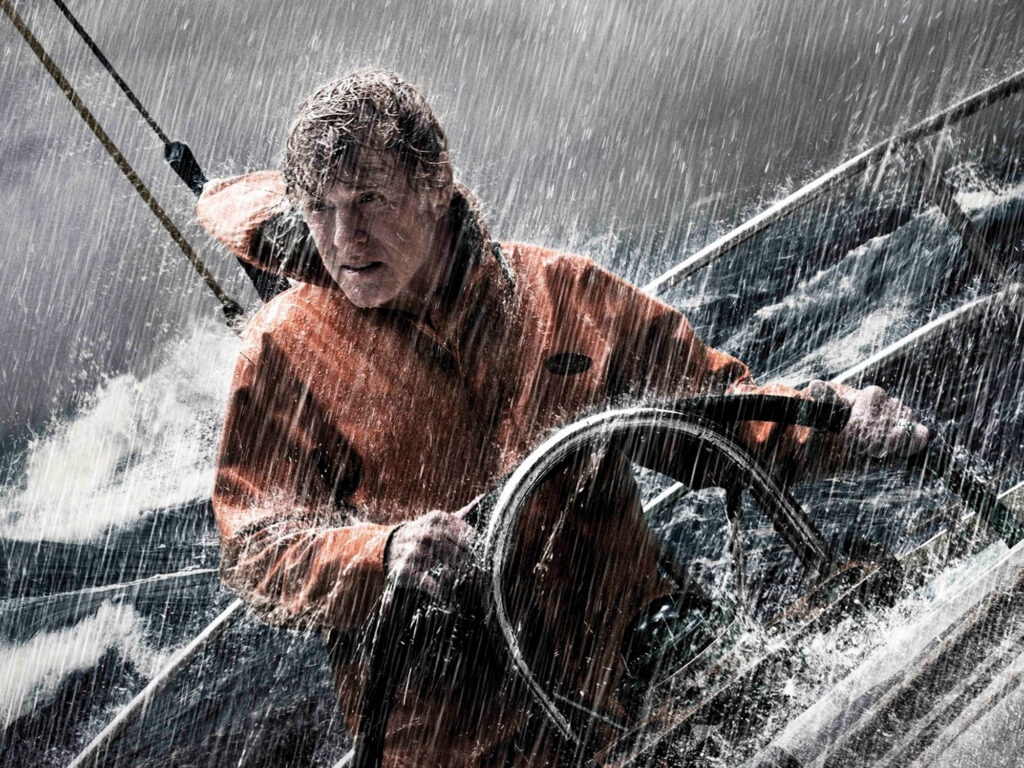
Making a list of the 10 Best Sailing Movies of All Time is kind of like making a list of the 10 best ways to eat chocolate. Some people prefer the chomp of a candy bar. Other people love the miniature chips baked into cookies. Still other people go for temperature, reaching for ice cream or for a bomb to drop into a hot mug of milk.
For us, the 10 Best Sailing Movies of All Time are the ones we’re happy to go back and watch again and again. Each of them captures something special about being out on the water, and gives us a memorable insight into the human spirit that sailing brings alive.
Here’s a list of our favorites. We look forward to hearing from you in the comments about your favorites, too.
10. White Squall
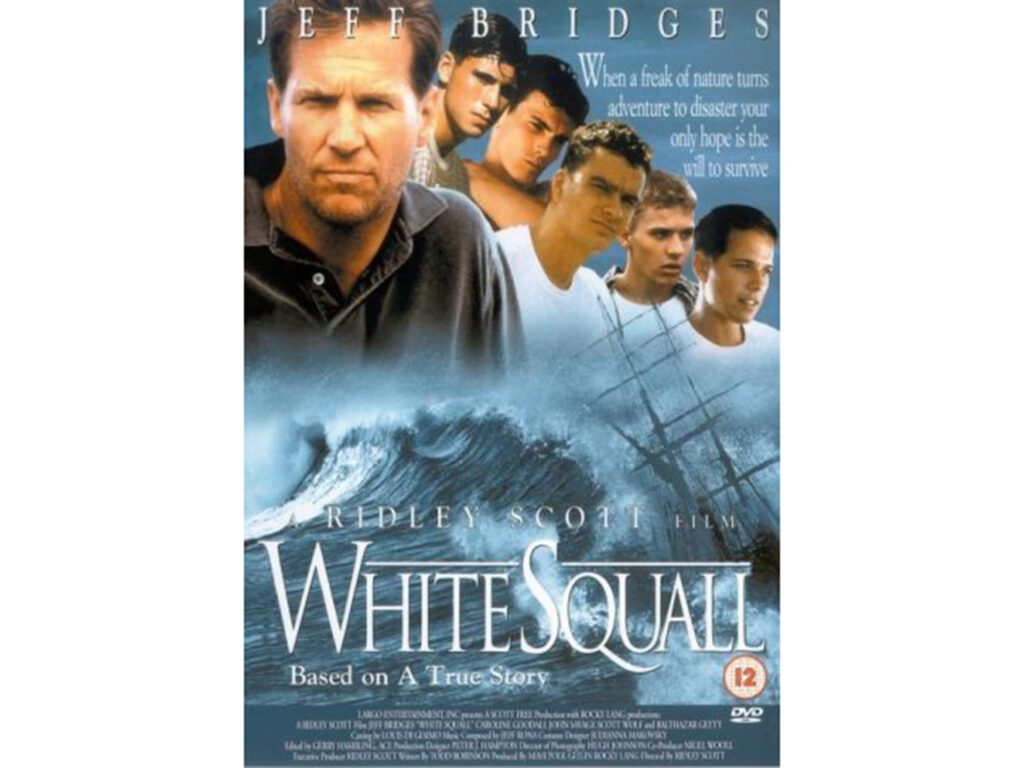
Ridley Scott, more recently known for the hits Napoleon and The Martian , directed this 1996 movie about teenage boys who discover discipline and camaraderie after facing a severe storm while training aboard a brigantine. The story is based on real events aboard the Albatross , which sank in 1961. Jeff Bridges stars as “Skipper,” teaching the boys through tough love and discipline.
9. Morning Light
This 2008 documentary focuses on the sloop Morning Light and 15 rookie sailors who want to crew in the Transpac Yacht Race. All the crew members were between 18 and 23 years old. Filming took place during training and the actual sailing of the race aboard Morning Light in 2007. Roy E. Disney held a private screening for US Sailing prior to the film’s release.
8. Kon-Tiki
Thor Heyerdahl’s epic 4,300-mile crossing of the Pacific on a balsawood raft in 1947 is the subject of this 2012 film—which was 2012’s highest-grossing film in Norway. It was an Academy Award nominee for Best Foreign Language Film, and for a Best Foreign Language Film Golden Globe, marking the first time a Norwegian film was nominated for both major Hollywood prizes.
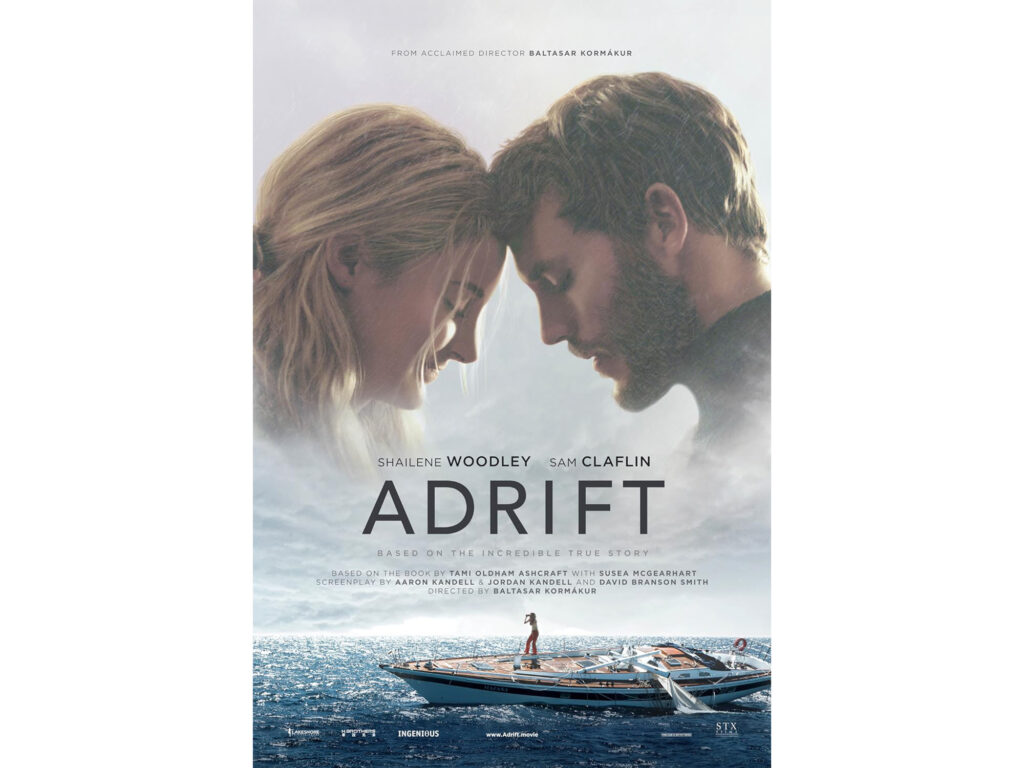
Released in 2018, Adrift focuses on a couple facing a catastrophic hurricane. The story is based on the 2002 book Red Sky in Mourning by Tami Oldham Ashcraft, and is set in 1983, during Hurricane Raymond. The film stars Shailene Woodley and Sam Claflin, who end up adrift in the middle of the Pacific Ocean, trying to get to Hawaii with a damaged boat and no radio.
6. True Spirit
This 2023 drama is about Australian teenager Jessica Watson, the youngest person ever to sail solo nonstop around the world. As the reviewer for the Sydney Morning Herald wrote: “This is a family-friendly picture, wholesome and tailored for the American market—although I suspect that director Sarah Spillane also shaped it to inspire teenage girls, in particular.”
This 2018 documentary tells the story of Tracy Edwards, a 24-year-old cook on charter boats who became the skipper of the first ever all-female crew to enter the Whitbread Round the World Race in 1989. They finished second in Maiden ’s class, winning two out of six individual legs of the race. In 1990, Edwards detailed her story in the book Maiden , co-written by Tim Madge.
4. Captain Ron
You know you love this 1992 comedy just as much as we do. Kurt Russell stars as a quirky sailor with a questionable past who takes Martin Short and his family through the Caribbean on an inherited sailboat. We know it’s fiction, but we see a lot of reality in this film. If you’ve spent even a little bit of time on boats in the islands, then we’re guessing you see it, too.
3. All Is Lost
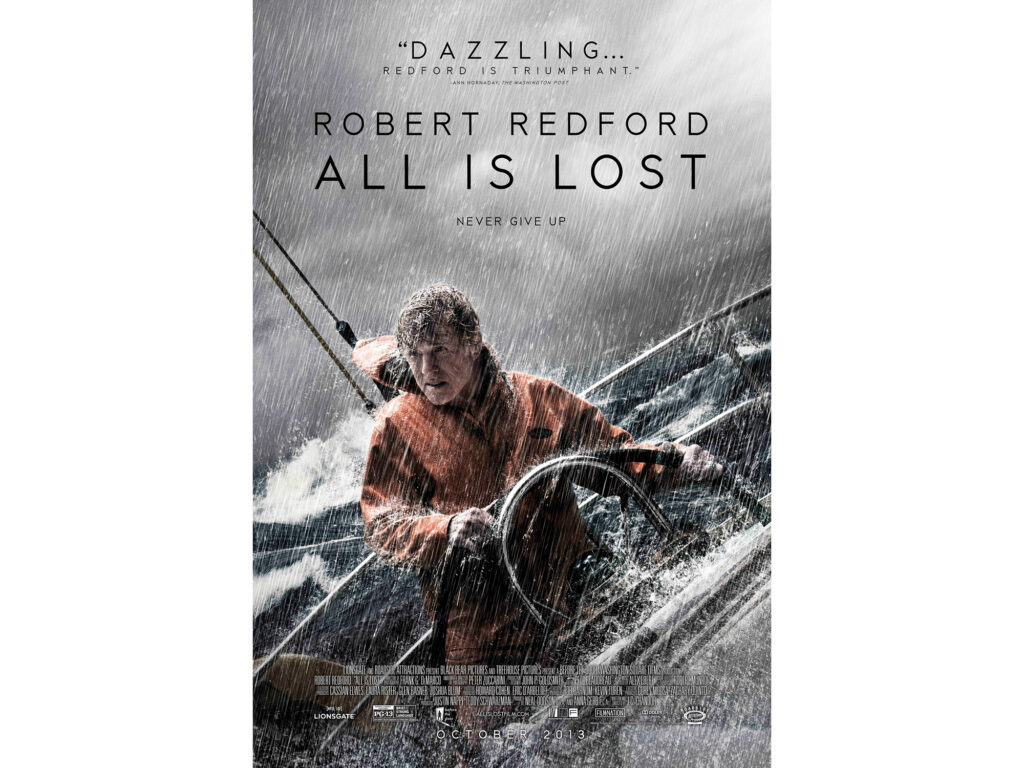
Robert Redford stars in this 2013 film about a resourceful sailor who collides with a shipping container at sea, and ends up face-to-face with his own mortality. Redford is the only cast member in the entire film, which includes just fifty-one spoken words. The title of the film is a nod to E. W. Hornung’s observation that when courage is lost, all is lost.
2. The Mercy
The story of amateur sailor Donald Crowhurst and his solo attempt to circumnavigate the globe are at the heart of this 2018 film. The struggles he confronted on the journey while his family awaited his return are one of the most enduring mysteries of recent times. Colin Firth and Rachel Weisz star as Donald and Clare Crowhurst.
1. In the Heart of the Sea
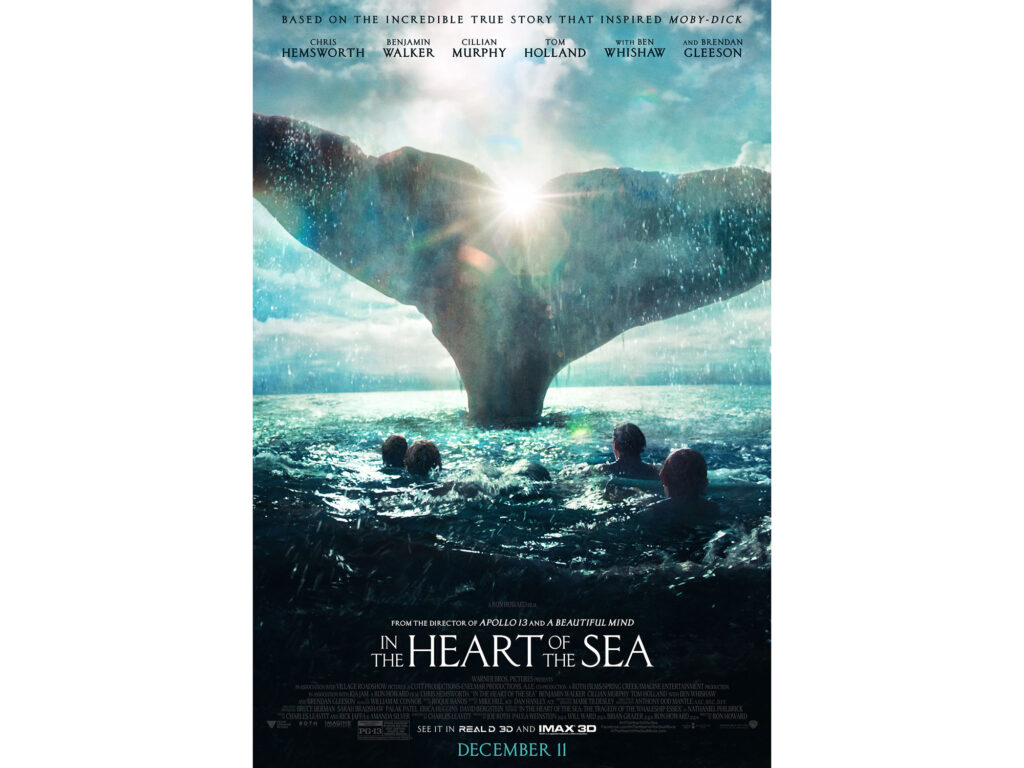
This 2015 film recounts how a whale sank a New England whaling ship in 1820, later inspiring the novel Moby-Dick . It’s directed and produced by Ron Howard, based on the book In the Heart of the Sea: The Tragedy of the Whaleship Essex . The film’s stars include Chris Hemsworth, Cillian Murphy and Tom Holland, a who’s who of today’s biggest Hollywood names.
- More: boat life , people
- More People
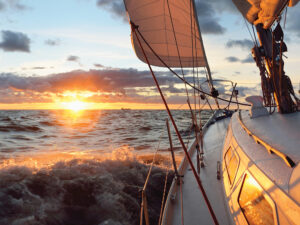
How to Buy a Boat: Smart Tips for Smooth Sailing
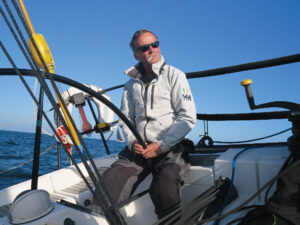
The Irishman
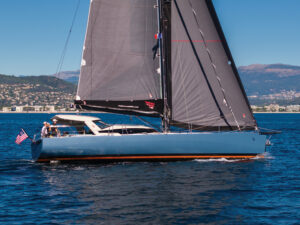
Cruising with Confidence: How Modern Boats Are Measuring Up

Sailor & Galley: Easy Pink Aioli Dip
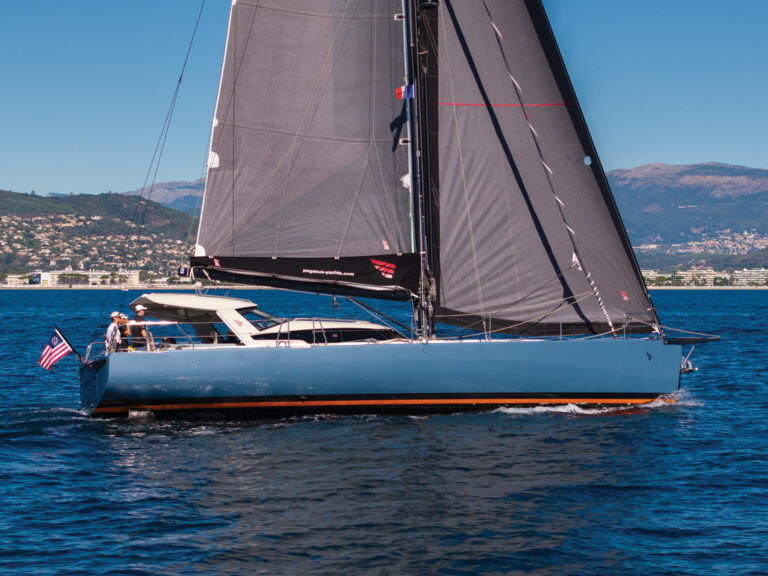
Sailboat Review: Dragonfly 40

Reefs at Risk: How Cruisers Can Champion Ocean Conservation
- Digital Edition
- Customer Service
- Privacy Policy
- Terms of Use
- Email Newsletters
- Cruising World
- Sailing World
- Salt Water Sportsman
- Sport Fishing
- Wakeboarding

IMAGES
COMMENTS
Feb 17, 2023 · The yacht was designed and built by the Italian yacht manufacturer Wally Yachts and was launched in 2006. It is an ultra-modern and luxurious vessel that is designed to combine speed, style, and comfort. In the movie "The Island," the Wallypower 118 is the personal yacht of the main antagonist, Dr. Merrick, played by Sean Bean. The yacht is ...
Sep 17, 2006 · I am new to the forum, and desperatly trying to find the designer name of the yacht that you see at the end of the movie The Island. For those who didn't see it, but might have an idea, here is a (vague) description: must be aprroximately 120/150 feet, dark green body, looks very very futurist, dark (black smoked glass) cabin, and some kind of ...
The Island is a 2005 American science fiction action movie directed and co-produced by Michael Bay and written by Caspian Tredwell-Owen, Alex Kurtzman and Roberto Orci, from a story by Tredwell-Owen. It stars Ewan McGregor, Scarlett Johansson, Djimon Hounsou, Sean Bean, Michael Clarke Duncan, and Steve Buscemi. The film is about Lincoln Six ...
Jun 29, 2016 · Northern Cross is actually available for charter in the Baltic Sea, and it costs tens of thousands of dollars to do so. The 43 meter yacht hosts up to 12 passengers and has six fabulous suites. It ranks as one of the favorite yachts in movies among Bond fans. 3. R Rendezvous aka Left Hand, Donnie Brasco (1997)
(at around 1h 13 mins) The black and white commercial featuring Sarah Jordan wasn't shot specifically for the movie; it is an actual commercial starring Scarlett Johansson. Robert S. Fiveson , director of The Clonus Horror (1979) , brought a copyright infringement suit against DreamWorks and Warner Brothers.
Michael has big plans to show his cousin Tommy a good time aboard a luxury yacht--until he discovers that the one he chartered is actually an old rusted fishing boat. But they are forced to jump ship when modern-day pirates chase it, leaving them stranded on a desert island with the captain, Jake Hunter.
Sep 30, 2021 · Yachts and the movies have enjoyed a close relationship since the silent age of Hollywood, symbolising glamour and style, wealth and mobility. In a word: class. Almost a century ago, before the talkies had even begun, Buster Keaton set the tone by buying the 5,000-tonne 113-metre USAT Buford for his 1924 comedy The Navigator .
May 29, 2004 · The post you are talking about is an earlier one on a yacht which was at Saltspring Island and I was trying to id. ... The movie is "The Island", and the Wally is ...
The Island begins with a montage of dream scene sequences, and a resonant male voice saying "You're special. You have a very special purpose in life. You've been chosen. The Island awaits you." Lincoln Six Echo (Ewan McGregor) snaps awake from his dream. An LED display above him on the ceiling of his room announces the detection of an erratic ...
Mar 19, 2024 · This 2008 documentary focuses on the sloop Morning Light and 15 rookie sailors who want to crew in the Transpac Yacht Race. All the crew members were between 18 and 23 years old. Filming took place during training and the actual sailing of the race aboard Morning Light in 2007. Roy E. Disney held a private screening for US Sailing prior to the ...